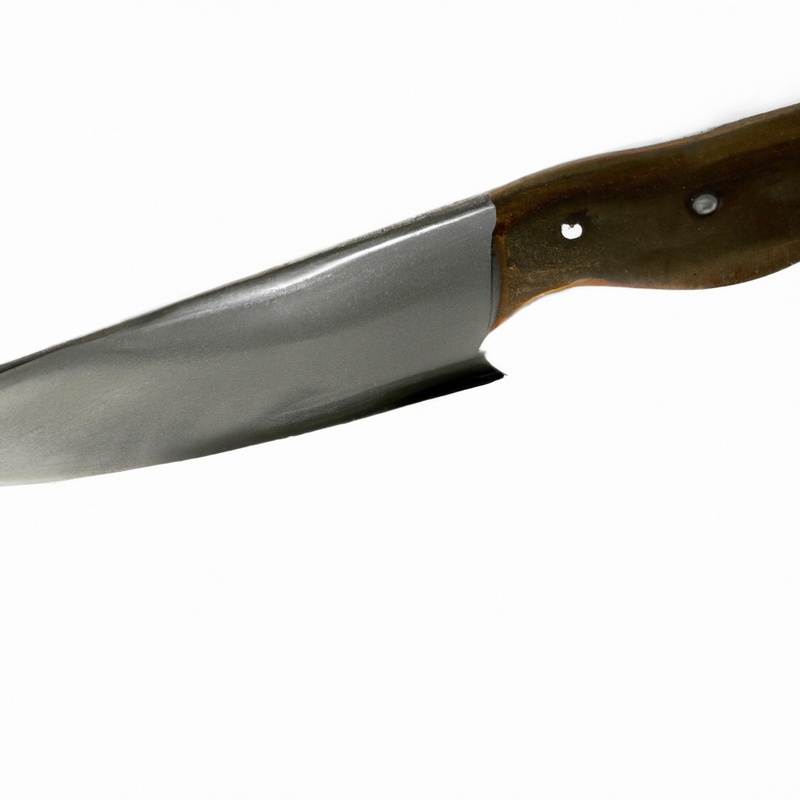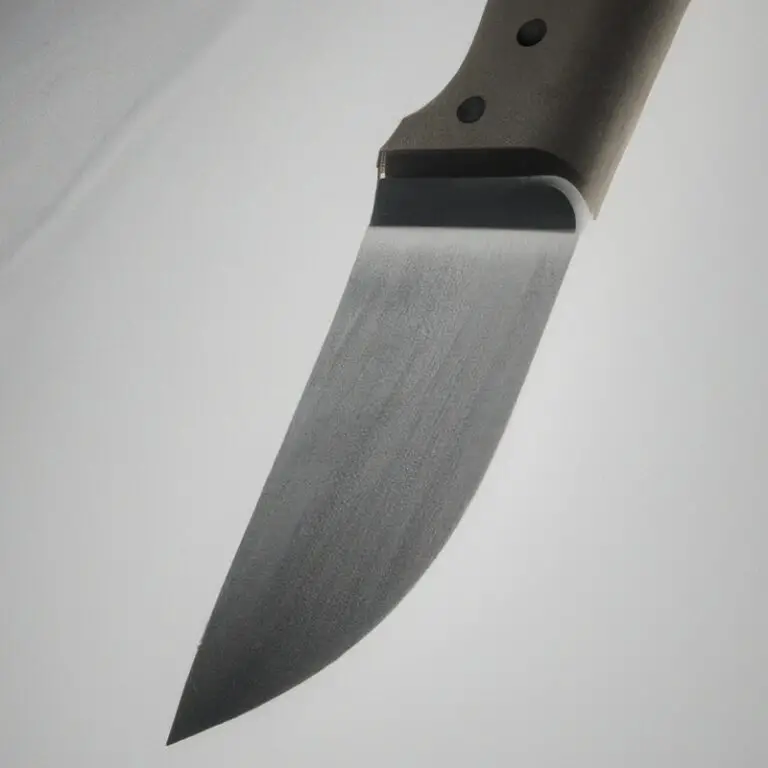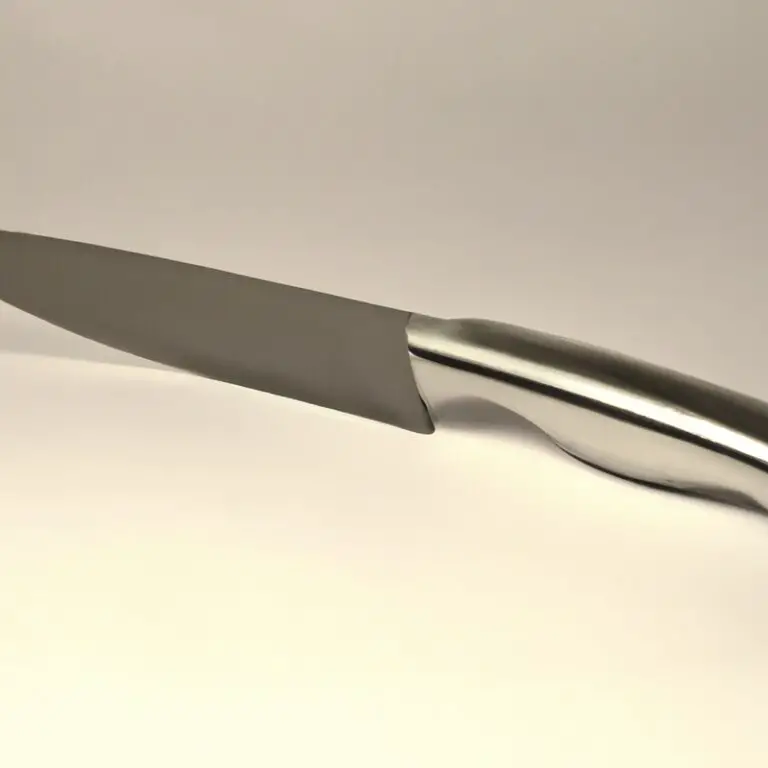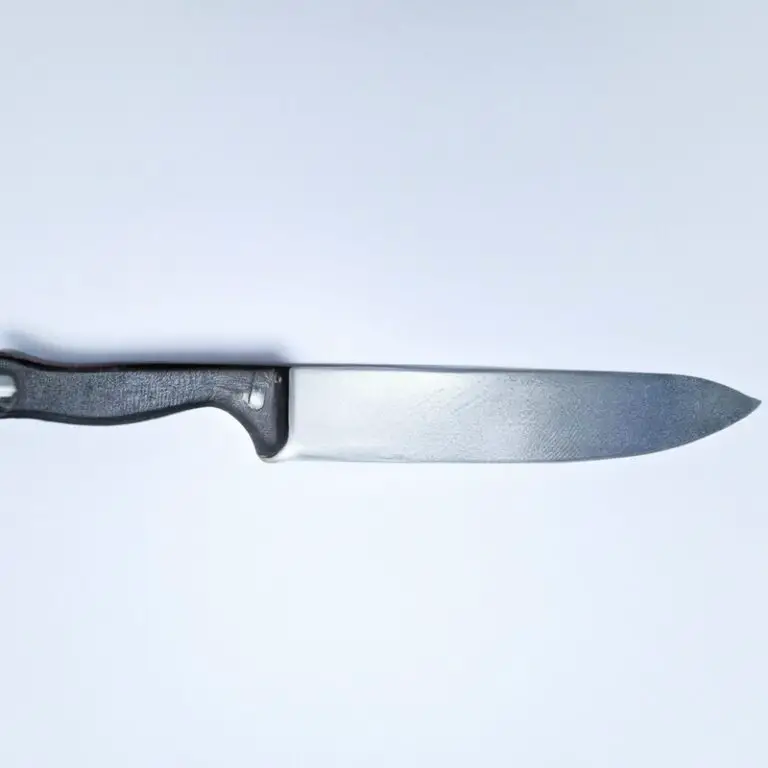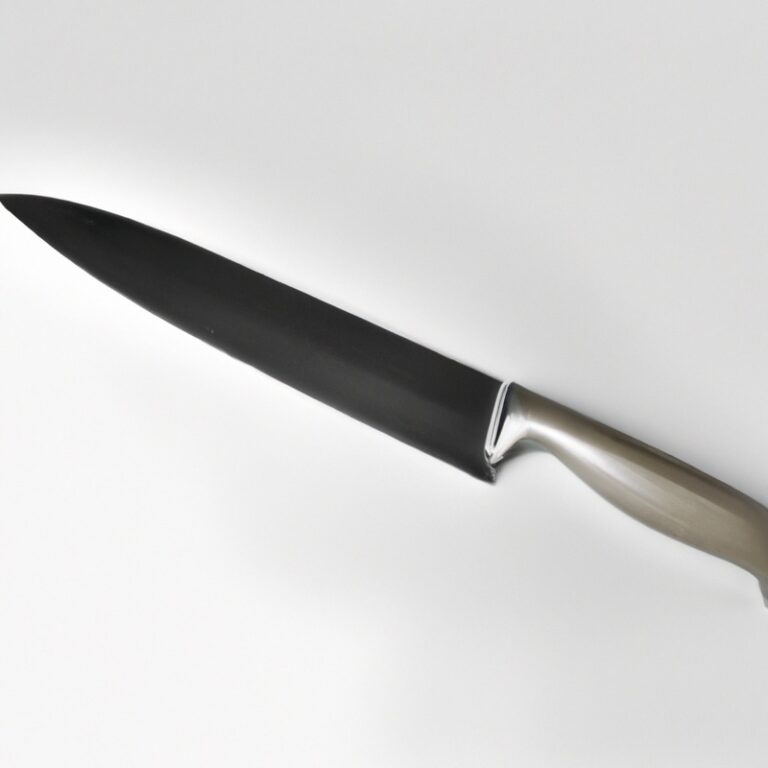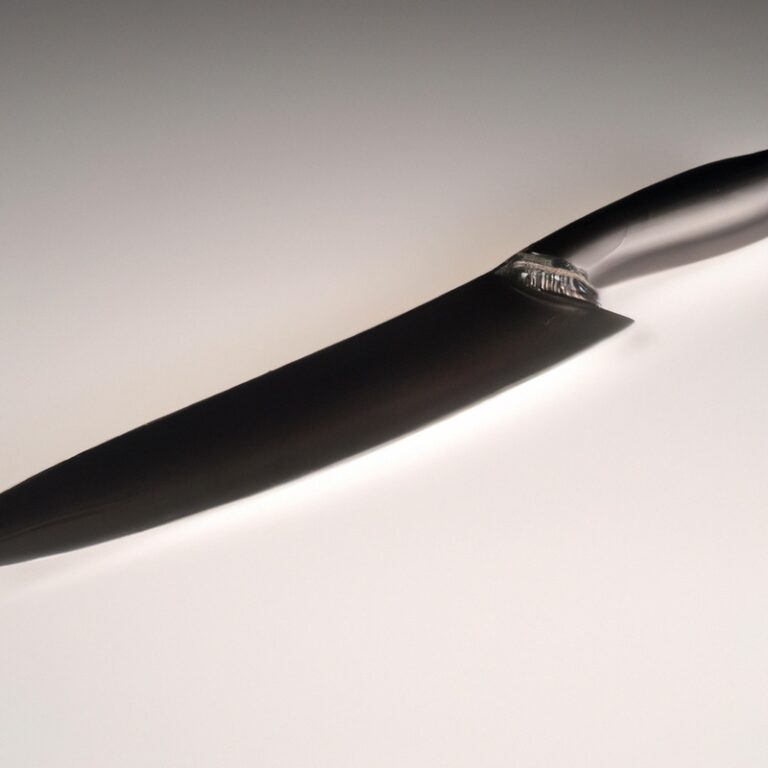How Does Knife Steel Affect Blade Sharpness?
Key Takeaways:
- The type of steel used in a knife blade significantly impacts its sharpness and edge retention.
- Blade sharpness is determined by factors such as the steel’s hardness, wear resistance, and ability to maintain a fine edge.
- High-carbon stainless steel is often preferred for its optimal balance between sharpness, durability, and corrosion resistance.
- Different steel alloys offer varying degrees of sharpness, allowing knives to be customized for specific cutting tasks.
Have you ever wondered why some knives effortlessly slice through food while others struggle to make a dent? The secret lies in the type of steel used to make the blade.
As a knife enthusiast, I’ve come to understand the vital role that knife steel plays in determining blade sharpness.
In this article, I’ll delve into the intricacies of knife steel and its impact on sharpness. We’ll explore different types of steel, such as high carbon steel, stainless steel, Damascus steel, and tool steel.
I’ll also share key factors to consider when choosing knife steel for optimal sharpness and tips for proper maintenance.
Excited? Let’s get started!
| Knife Steel | Blade Sharpness |
|---|---|
| High Carbon Steel | Retains sharpness for longer periods |
| Stainless Steel | Easier to maintain and less prone to corrosion, but may lose sharpness quicker |
| Damascus Steel | Offers a unique pattern and excellent sharpness, but can require more maintenance |
| Ceramic | Retains sharpness for a long time, but can be brittle and prone to breaking |
| Titanium | Offers lightweight and corrosion resistance, but may not hold an edge as long |
| VG10 Steel | Highly regarded for its sharpness and ability to maintain it over time |
The Importance of Knife Steel in Blade Sharpness
What is Knife Steel?
Knife steel refers to the material used to make the blade of a knife. It determines the sharpness, durability, and performance of the knife.
High-quality knife steels are usually made from a combination of iron and carbon, with additional elements such as chromium, vanadium, and molybdenum to enhance specific properties.
Steel types such as high carbon steel, stainless steel, damascus steel, and tool steel have different characteristics and affect blade sharpness in various ways. The choice of knife steel depends on factors like hardness, edge retention, corrosion resistance, and sharpening ease.
Proper maintenance and care are also essential to maintain blade sharpness.
Factors that Affect Blade Sharpness
The factors that affect blade sharpness can vary depending on the type of knife and its intended use. Here are some key factors to consider:
- Blade Material: Different types of steel can affect the sharpness of a blade. High carbon steel, for example, tends to have excellent sharpness but may require more maintenance. Stainless steel offers better corrosion resistance but may be slightly less sharp.
- Hardness: A harder blade typically retains its sharpness for longer periods. However, it may be more challenging to sharpen. So, striking a balance between hardness and sharpening ease is essential.
- Edge Geometry: The shape of the blade’s edge, such as its angle, thickness, and symmetry, can impact sharpness. Thin and well-maintained edges tend to be sharper, but they may be more prone to chipping or dulling.
- Blade Grind: The grind refers to how the blade is shaped during manufacturing. Different grinds affect sharpness differently. For example, a hollow grind provides excellent cutting performance, while a flat grind offers durability.
- Blade Maintenance: Regular cleaning, drying, and proper storage help to maintain sharpness. Sharpening techniques and frequency also play a role in blade sharpness.
Remember, understanding these factors can help you choose the right knife and maintain its sharpness for longer periods.
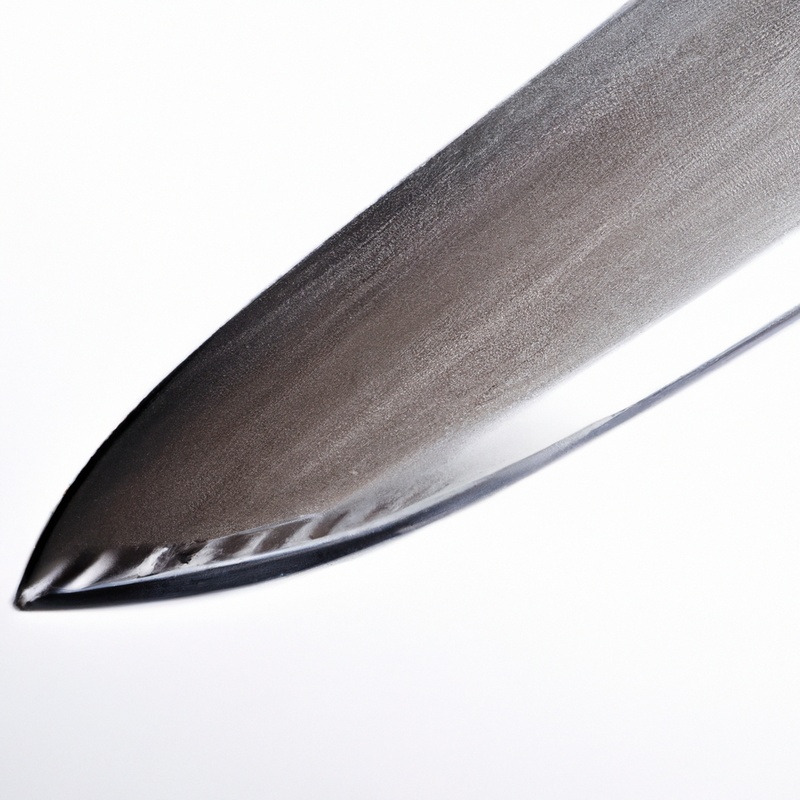
Understanding the Relationship Between Knife Steel and Blade Sharpness
The relationship between knife steel and blade sharpness is a key factor to consider when choosing a knife. The type of steel used in the blade can greatly affect its sharpness and performance.
Different types of steel have different properties, such as hardness and edge retention, which determine how well the blade will hold its edge.
Understanding the characteristics of different steel types will help you choose the right one for your specific needs. Factors such as hardness, edge retention, corrosion resistance, and sharpening ease should all be taken into account when considering the relationship between knife steel and blade sharpness.
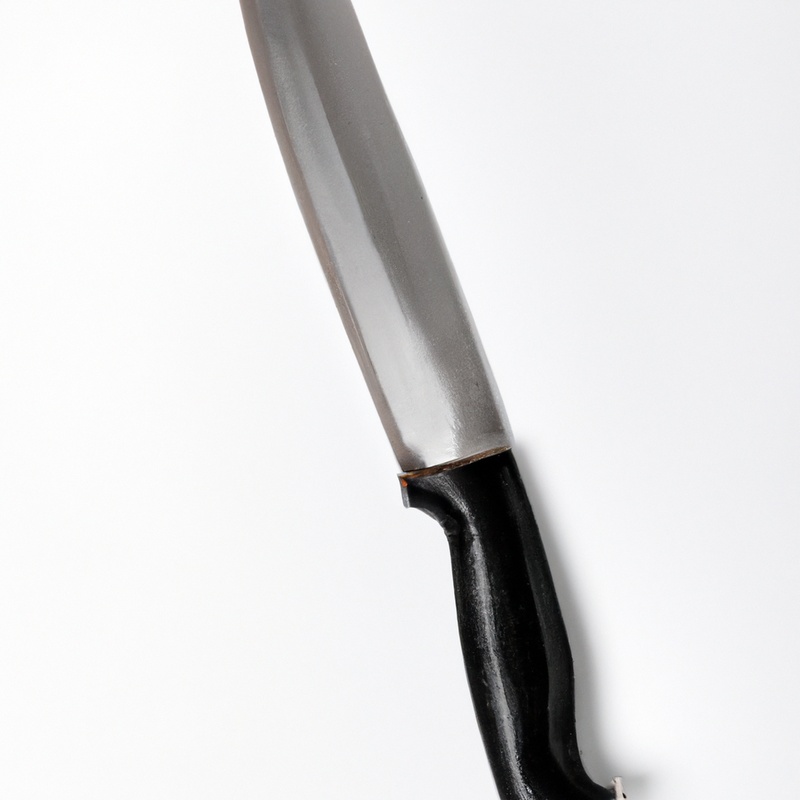
Types of Knife Steel and their Effect on Blade Sharpness
High Carbon Steel
High carbon steel is a popular choice for knife blades due to its excellent sharpness and edge retention properties.
It contains a higher percentage of carbon compared to other steel types, which enhances its hardness and strength.
This allows the blade to maintain a sharp edge for longer periods, making it ideal for tasks that require precision and durability.
However, high carbon steel is more prone to rust and corrosion, so it requires proper care and maintenance to prevent damage.
Regular cleaning, drying, and oiling are essential to maintain the blade’s sharpness and longevity.
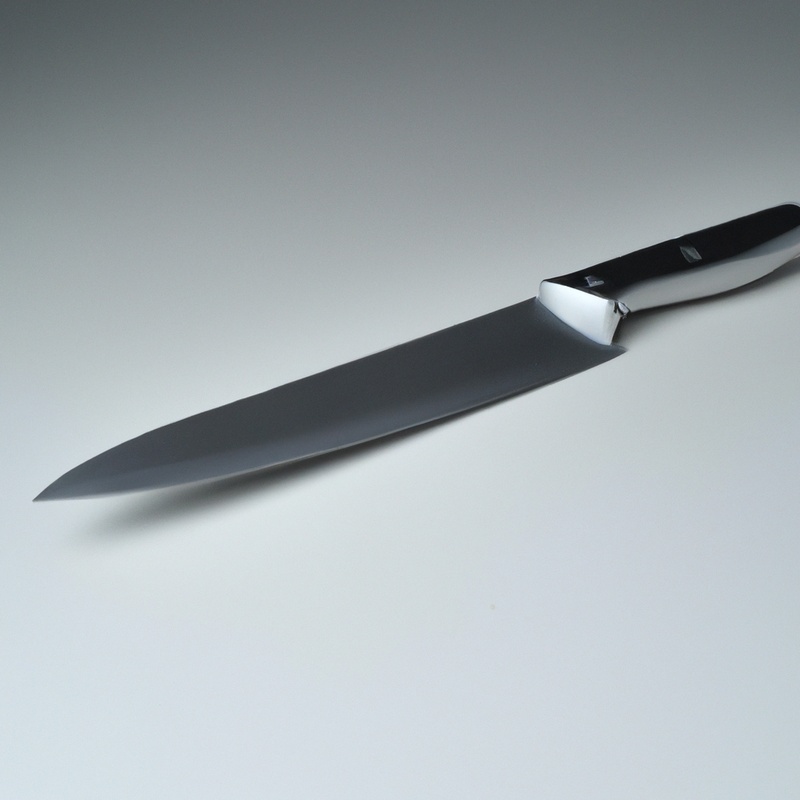
Stainless Steel
Stainless steel is a popular choice for knife blades due to its excellent corrosion resistance.
It contains a high percentage of chromium, which forms a protective layer on the surface that helps prevent rust and staining.
Stainless steel is also known for its durability and strength, making it a reliable option for sharp blades.
Additionally, it is relatively easy to sharpen and maintain.
When choosing stainless steel for your knife, consider factors such as hardness, edge retention, and sharpening ease to ensure the blade meets your specific needs.
Damascus Steel
Damascus Steel is known for its beautiful patterns and exceptional strength. It has a long history dating back to ancient times and is forged by combining layers of different steels.
This creates a blade with both hardness and flexibility.
The unique pattern, known as the Damascus pattern, is achieved through a process of folding and forging the steel repeatedly. The result is a blade that not only looks stunning but also holds a razor-sharp edge.
Damascus Steel is highly regarded by knife enthusiasts and collectors for its superior performance and artistic appeal.
Tool Steel
Tool steel is a type of steel widely used for making cutting tools and blades. It is known for its excellent hardness, toughness, and wear resistance.
Tool steel is specifically designed to withstand high temperatures and repeated impacts, making it ideal for applications that require sharp and durable blades.
With proper heat treatment, tool steel can achieve a high level of hardness, ensuring long-lasting sharpness. This makes it a popular choice for knives, scissors, and other cutting instruments.
Tool steel is available in various grades, each with its own unique properties and characteristics to suit different blade sharpness needs.
Key Factors to Consider when Choosing Knife Steel for Blade Sharpness
Hardness of the Steel
When it comes to blade sharpness, the hardness of the steel plays a crucial role. Hardness refers to a steel’s ability to resist deformation and maintain its shape.
A harder steel will tend to hold a sharper edge for longer periods of time compared to a softer one.
High carbon steel often offers excellent hardness, but it can be more prone to corrosion. Stainless steel, on the other hand, provides a good balance between hardness and corrosion resistance.
Damascus and tool steels also have their own unique hardness characteristics.
Choose the hardness level that suits your needs and consider factors like corrosion resistance and sharpening ease as well.
Edge Retention
Edge retention is a key factor to consider when choosing knife steel for blade sharpness.
It refers to how well the blade holds its sharpness over time and with regular use.
Different types of steel have varying levels of edge retention.
High carbon steel typically has excellent edge retention, while stainless steel may not hold its edge as long.
Factors such as hardness, composition, and heat treatment also affect edge retention.
Ultimately, choosing a steel with good edge retention will ensure that your blade stays sharp for longer periods, reducing the need for frequent sharpening.
Corrosion Resistance
Corrosion resistance is an important factor to consider when choosing knife steel for blade sharpness. It refers to the ability of the steel to withstand rust or tarnish caused by exposure to moisture or acidic environments.
Corrosion-resistant steels, such as stainless steel, are commonly used in kitchen knives and outdoor knives that may come into contact with water.
These steels contain a higher amount of chromium, which forms a protective layer on the surface of the blade, preventing rust and corrosion. Proper care and maintenance, such as regular cleaning and drying, are also crucial in preserving the corrosion resistance of the knife steel.
Sharpening Ease
When considering the sharpening ease of knife steel, it’s important to look at its composition and hardness. Some types of steel, like high carbon steel, can be easier to sharpen compared to stainless steel or tool steel.
Additionally, the heat treatment and blade geometry play a role in sharpening ease.
Knife steel with a finer grain structure tends to be easier to sharpen. It’s also worth considering the type of sharpening system you prefer, as some steels may respond better to certain methods.
Ultimately, finding the right balance between sharpness and ease of maintenance is key.
Proper Maintenance and Care for Knife Steel to Maintain Blade Sharpness
Regular Cleaning and Drying
To maintain the sharpness of your knife blade, regular cleaning and drying are essential.
After each use, make sure to wash your knife with warm soapy water and a soft sponge.
Avoid using abrasive materials that could damage the blade.
Once cleaned, thoroughly dry the knife to prevent any moisture from causing corrosion.
If the knife has a wooden handle, be careful not to let it soak in water for too long.
Remember, a clean and dry knife will not only keep your blade sharp but also extend its lifespan.
Proper Storage
Proper storage is essential for maintaining the sharpness of your knife blade.
Here are some key considerations:
- Store your knife in a knife block, sheath, or a designated knife drawer to protect the blade from damage and prevent accidents.
- Avoid storing knives in a cluttered drawer or alongside other utensils to prevent scratches or dulling.
- Make sure the knife is clean and completely dry before storing to prevent corrosion.
- Consider using blade guards or edge protectors to further safeguard the sharpness of your knife.
- Keep your knife away from extreme temperatures and humidity, as these can affect the knife’s performance.
Sharpening Techniques for Different Steel Types
Different steel types require different sharpening techniques to maintain blade sharpness.
Here are some tips:
- High Carbon Steel: Use a traditional sharpening stone or honing rod for regular maintenance. Be careful not to overheat the blade during the sharpening process.
- Stainless Steel: Use a sharpening stone or a ceramic rod. Keep in mind that stainless steel is harder to sharpen, so maintaining a consistent angle is crucial.
- Damascus Steel: Use a sharpening stone or diamond stone with a fine grit. Take extra care to avoid scratching the delicate pattern on the blade.
- Tool Steel: Use a sharpening stone or ceramic rod. Tool steel can be harder to sharpen, so take your time and use light pressure.
Remember to always follow the manufacturer’s instructions and practice patience and precision when sharpening your knife.
Choosing the Right Knife Steel for your Blade Sharpness Needs
Consider the Purpose of the Knife
When choosing the right knife steel for blade sharpness, it’s important to consider the purpose of the knife.
Different knives are designed for specific tasks, such as cutting vegetables, filleting fish, or chopping wood.
Each task requires a different level of sharpness and durability.
For example, a kitchen knife requires a steel that can maintain a razor-sharp edge for precise cuts, while a survival knife needs a steel that can withstand heavy-duty tasks and retain its sharpness for longer periods.
Evaluating the intended use of the knife will help you determine the right steel for your blade sharpness needs.
Evaluate your Skill Level
When it comes to choosing the right knife steel for blade sharpness, it’s important to evaluate your skill level. Assessing your proficiency with knives will help determine the type of steel that suits your needs.
For beginners, a stainless steel blade might be a good option as it is easy to maintain and less prone to corrosion.
On the other hand, experienced users may prefer high carbon steel or tool steel for their superior edge retention and sharpening capabilities. Consider your skill level and choose a knife steel that matches your abilities.
Budget Considerations
When choosing the right knife steel for blade sharpness, budget considerations play a significant role. Different types of knife steel vary in price, and it’s important to find a balance between cost and quality.
While high-end steels may offer superior sharpness and durability, they can be expensive.
On the other hand, there are budget-friendly steel options available that still provide satisfactory sharpness. It’s crucial to assess your needs, evaluate your budget, and find a steel that meets your requirements without breaking the bank.
After all, a sharp blade doesn’t have to come with a hefty price tag.
Final Verdict
The choice of knife steel is crucial in determining blade sharpness.
Factors such as hardness, edge retention, corrosion resistance, and sharpening ease all play a role in determining the sharpness and longevity of a blade.
Understanding the relationship between knife steel and blade sharpness allows us to make informed decisions when selecting a knife.
Proper maintenance and care also contribute to maintaining blade sharpness over time.
By considering the purpose of the knife, evaluating your skill level, and considering budget constraints, you can choose the right knife steel that meets your blade sharpness needs.

